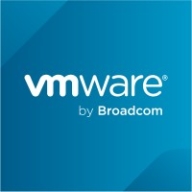

InfluxDB and VMware Aria Operations for Applications are tools in the time-series data management and application performance monitoring fields, respectively. InfluxDB has an edge in cost-effectiveness and flexibility, while VMware Aria Operations is favored for its extensive features.
Features: InfluxDB delivers efficient time-series database capabilities with impressive scalability and integrates easily with a wide variety of data sources. VMware Aria Operations for Applications provides advanced analytics, automation, and a comprehensive suite of monitoring tools, making it ideal for enterprises with a need for broad application management.
Room for Improvement: InfluxDB could benefit from enhanced user interface design, more robust analytics tools, and further expansion of its native integrations. VMware Aria Operations might improve its pricing structure, simplify the initial setup process, and increase customization options to better meet diverse client needs.
Ease of Deployment and Customer Service: InfluxDB is known for quick deployment due to its straightforward architecture and provides reliable technical support. VMware Aria Operations, though requiring more initial setup, offers extensive vendor assistance and resource support that can be advantageous for long-term use.
Pricing and ROI: InfluxDB is competitively priced with low setup costs, ensuring a strong ROI because of its flexibility and scalability in managing time-series data. VMware Aria Operations, while potentially more expensive, justifies its price through its robust feature set, providing value to businesses in need of detailed performance insights. Exact pricing details are not specified; however, InfluxDB typically offers a more cost-effective solution compared to VMware Aria Operations.
| Product | Market Share (%) |
|---|---|
| VMware Aria Operations for Applications | 1.5% |
| InfluxDB | 0.6% |
| Other | 97.9% |


| Company Size | Count |
|---|---|
| Small Business | 4 |
| Midsize Enterprise | 3 |
| Large Enterprise | 6 |
| Company Size | Count |
|---|---|
| Small Business | 4 |
| Midsize Enterprise | 1 |
| Large Enterprise | 10 |
InfluxDB is open-source software that helps developers and enterprises alike to collect, store, process, and visualize time series data and to build next-generation applications. InfluxDB provides monitoring and insight on IoT, application, system, container, and infrastructure quickly and easily without complexities or compromises in scale, speed, or productivity.
InfluxDB has become a popular insight system for unified metrics and events enabling the most demanding SLAs. InfluxDB is used in just about every type of industry across a wide range of use cases, including network monitoring, IoT monitoring, industrial IoT, and infrastructure and application monitoring.
InfluxDB offers its users:
InfluxDB Benefits
There are several benefits to using InfluxDB . Some of the biggest advantages the solution offers include:
Reviews from Real Users
InfluxDB stands out among its competitors for a number of reasons. Two major ones are its flexible integration options and its data aggregation feature.
Shalauddin Ahamad S., a software engineer at a tech services company, notes, “The most valuable features are aggregating the data and the integration with Grafana for monitoring.”
VMware Tanzu Observability by Wavefront is a powerful tool for monitoring and analyzing the performance and availability of applications and infrastructure in real-time.
With its comprehensive monitoring capabilities, visualizing and analyzing data becomes effortless. The real-time alerting system ensures timely issue resolution, while scalability and a user-friendly interface provide a seamless experience for smooth operations.
We monitor all IT Infrastructure Monitoring reviews to prevent fraudulent reviews and keep review quality high. We do not post reviews by company employees or direct competitors. We validate each review for authenticity via cross-reference with LinkedIn, and personal follow-up with the reviewer when necessary.